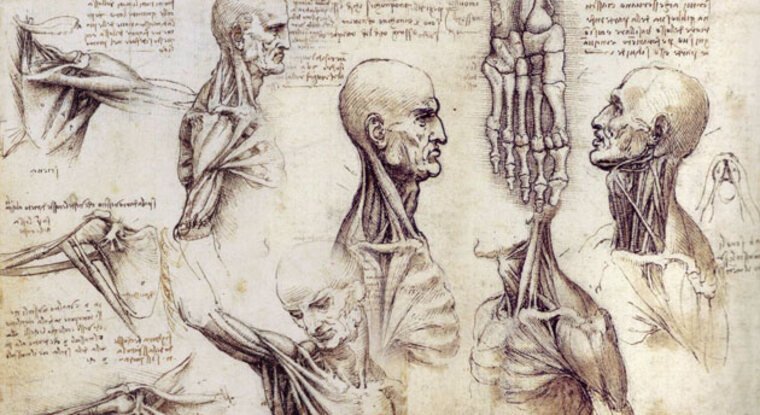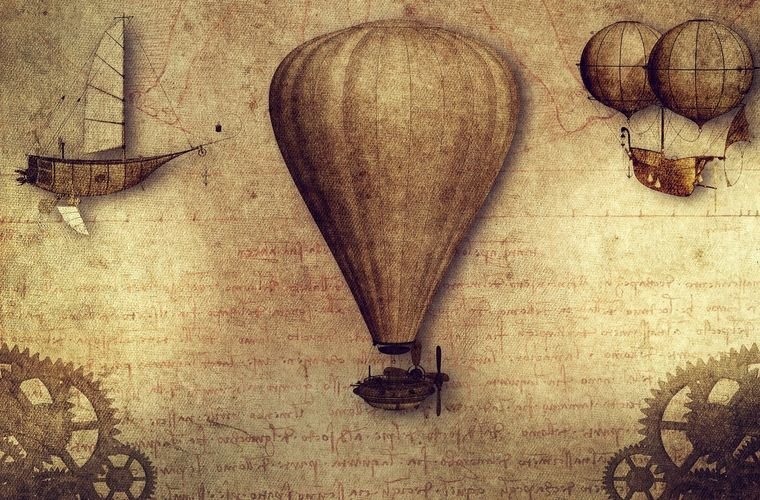Who says you have to be a scientist to contribute to science?
In truth, some significant scientific advances have come from historical figures better known for their artistic and literary contributions than their application of the scientific method.
The following five “non-scientists” used their creativity to not only produce iconic works of art but push the boundaries of human knowledge.
In their individual journeys, some had to fight prejudice at every turn, while others were embraced by the scientific community.
Yet, each of their stories is a testament to the power of curiosity.
Edgar Allan Poe: Black Holes and Space/Time
Known for his gothic poems and mysterious short stories, Edgar Allan Poe also helped make advances in science.
He wrote a prose poem (similar to an essay) in 1848 titled “Eureka” in which he discussed astronomy and the Universe. Poe was one of the first to suggest the possibility of multiple universes, as well as the existence of black holes. “Eureka” also suggested the idea of space-time, as Poe wrote: “that space and duration are one.”
When “Eureka” was originally published, it was largely ignored, except in Europe. In 1922, Russian mathematician Alexander Friedmann (a fan of Poe’s) used the ideas in “Eureka” to help explain how our Universe works. Poe was never credited in Friedman’s work. While “Eureka” also contained many inaccurate scientific ideas (such as pseudo-science), it provided the catalyst for many other scientists to think about our Universe.


Leonardo da Vinci: Human Anatomy to Flying Machines
Considered a true “Renaissance Man,” da Vinci not only made advances in art but also in anatomy and engineering. In 1489, da Vinci began to seriously study anatomy, drawing out different parts of the body, including the eye socket, human muscles, and the skeletal system. To learn about these systems, da Vinci is said to have dissected around 30 corpses. His drawings helped influence his sculpting, making it more scientifically accurate and lifelike. After his death, scientists were able to use his drawings to better understand how the human body works, advancing medicine.
da Vinci also made advances in engineering. From designing bridges to flying machines, he helped inspire future inventions.
More than 300 years after his work, da Vinci’s designs for a bridge were used by Swiss bridge builders. da Vinci was one of the first to design gear and crank systems that would later be applied to a variety of devices, from clocks to engines. He, of course, received none of the credit for his advances in science.
Beatrix Potter: Botany and the Glass Ceiling
Children’s writer Beatrix Potter’s work in science has only recently come to light. Known for her children’s books, like The Tales of Peter Rabbit, Potter was fascinated with the natural flora of England.
She worked on scientific illustrations of mushrooms and other fungi and even wrote a scientific paper on mushroom reproduction (called sporing) in 1897. Potter tried to join the famous Linnean Society but was rejected because she was a woman. She wasn’t even allowed to present her paper to the Society. After her death, the Linnean Society published an apology for the blatant discrimination against her. Potter’s scientific illustrations can still be found in museums, as they have inspired other botanists to find new species and uncover more secrets about plant life.
John Steinbeck: Sea Life Species
Depicting the struggles of American life during the Great Depression, John Steinbeck’s works are considered classics. From The Grapes of Wrath to Of Mice and Men, most of Steinbeck’s work is part of a typical high school curriculum. While writing, Steinbeck found time to also help contribute to science, via his friendship with marine biologist Ed Ricketts.
Based in Monterey, California, Ricketts’ laboratory focused on sea life in the Gulf of California. In 1940, Ricketts and Steinbeck embarked on a sailing trip around the Gulf. Later titled Log from the Sea of Cortez, Steinbeck’s nonfiction book recounted the trip, where the men cataloged over 480 species of marine invertebrates.
After the book was published, an additional 40 species were named and described, inspired by Steinbeck’s work.
Isaac Asimov: Robotics, Engineering & Black Holes
Considered one of the biggest science fiction writers in history, Asimov’s impact in the fields of robotics and engineering should be no surprise. With over 500 works, including the famous Foundation series and I, Robot, Asimov has inspired many scientists. According to Professor of Science Fiction studies at Georgia Tech, Lisa Yaszek: “Asimov’s robot stories tend to follow a very particular structure: people program robots, robots act in ways that seem to break the laws of robotics, humans figure out what’s going on and fix the problem.”
Asimov’s descriptions of programming have inspired coders and tech developers to ask ethical questions. Asimov was even the first to coin the term “robotics.” He also wrote a book on black holes, showing the widespread advances he contributed to science.
Kenna Hughes-Castleberry is a staff writer at the Debrief and the Science Communicator at JILA (a partnership between the University of Colorado Boulder and NIST). She focuses on deep tech, the metaverse, and quantum technology. You can find more of her work at her website: https://kennacastleberry.com/

